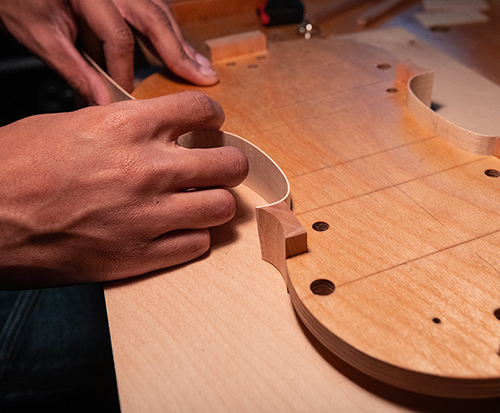Exploring the Wood Used in Violin Making

Violins are renowned for their beautiful sound and craftsmanship, with the choice of wood playing a crucial role in their construction. The selection of wood in violin making is a meticulous process, considering factors such as tonal qualities, resonance, and visual appeal. In this SEO blog, we will explore the types of wood used in violin making, such as spruce and maple, and understand how they contribute to the resonance, tonal qualities, and visual beauty of this remarkable instrument.
- Spruce Wood: The Soul of the Sound
Spruce wood, specifically the species Picea abies, is typically used for the top or soundboard of a violin. This wood is highly valued for its exceptional acoustic properties, including its lightweight, strength, and ability to resonate. The even and straight grain structure of spruce contributes to the clarity and projection of the sound. Its resonant properties allow the soundboard to vibrate freely, producing a vibrant tone. The top wood is often carefully chosen for violin making and its specific grain orientation and quality to enhance the violin’s sound and responsiveness.
- Maple Wood: Beauty and Resilience
Maple wood, specifically the species Acer pseudoplatanus or Acer saccharum, is commonly used for the back, sides, and neck of a violin. Maple is known for its density, stability, and stunning figure. The tight and flame-like grain pattern of maple adds visual beauty to the instrument. More importantly, the dense nature of maple contributes to the instrument’s tonal balance and durability. The back and sides of the violin reflect and project the sound produced by the vibrating soundboard, while the neck provides stability and support.
- Other Wood Elements: Fingerboard, Tailpiece, and Pegs
While spruce and maple are the primary woods used for violin making in the construction of a violin, other wood elements are also essential. Ebony is commonly chosen for the fingerboard, tailpiece, and pegs due to its density, durability, and smooth texture. Ebony offers a stable and hard-wearing surface for precise fingering and smooth string contact. The dark color of ebony provides an elegant contrast against the lighter tones of spruce and maple.
- Varnish: Enhancing Beauty and Protecting Wood
In addition to the wood used in the construction of the violin making varnish is applied to enhance the visual appeal and protect the wood. Varnish formulations can vary, ranging from oil-based to spirit-based. The varnish not only adds a protective layer but also brings out the natural beauty of the wood, enhancing the grain patterns and colors.
Conclusion
The selection of wood in violin making is a critical aspect that influences the instrument’s resonance, tonal qualities, and visual beauty. The use of spruce for the soundboard provides exceptional tonal projection and responsiveness, while maple for the back, sides, and neck offers durability and stunning aesthetics. Other wood elements, such as ebony for the fingerboard, tailpiece, and pegs, contribute to the instrument’s stability and functionality.
The careful selection of wood and the artistry of the violin making create an instrument that not only produces beautiful sounds but is also a visual masterpiece. By understanding the importance of wood in violin making, we can truly appreciate the craftsmanship and artistry that go into creating this timeless and enchanting instrument.

Leave a Reply